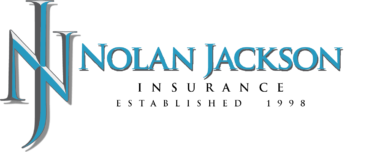Hurricane season presents significant challenges for religious institutions across coastal and vulnerable regions. We understand that church preparedness extends far beyond physical structures—it encompasses protecting congregations, preserving sacred spaces, and ensuring ministry continuity during catastrophic weather events. Comprehensive Church Building Insurance, combined with strategic preparation measures, forms the foundation of effective hurricane readiness for churches of all sizes.
Understanding Hurricane Risks for Religious Institutions
Churches face unique vulnerabilities during hurricane season that distinguish them from commercial properties. Historic architecture, irreplaceable religious artifacts, and community gathering spaces require specialized protection strategies. Many religious facilities feature stained glass windows, tall steeples, and expansive roof structures that become particularly susceptible to high winds and flying debris.
The financial burden of hurricane damage often proves devastating for congregations operating on limited budgets. Without adequate insurance protection and preparedness planning, a single storm can disrupt ministry operations for months or even years. We recognize that churches serve as critical community resources during disasters, making their operational continuity essential for neighborhood recovery efforts.
Essential Insurance Coverage Components
Property Insurance Fundamentals
Church Building Insurance serves as the cornerstone of hurricane protection for religious institutions. This coverage addresses damage to buildings, fixtures, and permanently installed equipment caused by wind, rain, and flooding. We recommend ensuring policies include replacement cost coverage rather than actual cash value, which accounts for depreciation and may leave congregations significantly underinsured.
Churches must specifically verify that their Church Building Insurance provides adequate coverage for specialized architectural features, including organs, bells, stained glass installations, and custom woodwork. Standard policies may impose sublimits on these items, requiring separate scheduled coverage to ensure full protection.
Flood Insurance Requirements
Many church leaders mistakenly believe their property insurance includes flood protection. Flood insurance requires separate policies through the National Flood Insurance Program (NFIP) or private insurers. We strongly advise obtaining flood coverage even for properties outside designated flood zones, as changing weather patterns increasingly cause flooding in previously unaffected areas.
For non-residential buildings like churches, the NFIP provides up to $500,000 in building coverage, according to Floodsmart.gov, and up to $500,000 in contents coverage.
Regarding the waiting period: There is typically a 30-day waiting period for an NFIP policy to go into effect, according to Fema.gov, and coverage becomes effective at 12:01 a.m. local time on the 30th calendar day after the application date and payment of premium
Business Interruption Insurance
Business interruption coverage, also called business income insurance, compensates for lost donations and rental income when hurricane damage forces temporary closure. For churches, this coverage proves invaluable for maintaining staff salaries, continuing mortgage payments, and funding ongoing ministry programs during recovery periods.
We recommend policies that include extended period of indemnity, extending coverage beyond physical restoration to account for the time required to rebuild congregation attendance and donation levels. This provision recognizes that churches often experience prolonged financial recovery even after buildings become operational.
Contents and Equipment Coverage
Religious institutions house considerable personal property including sound systems, computers, musical instruments, furniture, and educational materials. Comprehensive contents insurance protects these items from hurricane damage, though careful inventory documentation proves essential for successful claims processing.
Churches utilizing rented or leased equipment should verify whether rental agreements include damage coverage or if separate insurance becomes necessary. Electronic equipment particularly benefits from scheduled coverage with agreed-upon values to prevent disputes during claims settlement.
Critical Preparedness Measures
Conducting Comprehensive Risk Assessments
Effective hurricane preparation begins with thorough vulnerability assessments identifying potential weaknesses in church properties. We recommend engaging professional inspectors to evaluate roofing systems, window installations, door security, and drainage infrastructure. These assessments often reveal maintenance needs that, when addressed proactively, significantly reduce storm damage.
Tree management represents another crucial preparedness component. Overhanging branches and weakened trees pose substantial risks to buildings during hurricanes. Professional arborists can identify hazardous trees requiring removal or trimming well before storm season arrives.
Developing Emergency Response Plans
Churches require detailed emergency action plans outlining specific responsibilities for staff, volunteers, and leadership during hurricane threats. These plans should address evacuation procedures, communication protocols, property securing processes, and post-storm assessment procedures.
We emphasize the importance of establishing clear communication chains ensuring all stakeholders receive timely updates before, during, and after storms. Designating specific individuals to monitor weather forecasts, coordinate preparation activities, and manage insurance communications streamlines emergency responses.
Creating Detailed Property Inventories
Comprehensive documentation of church property dramatically improves insurance claim outcomes. We recommend maintaining detailed inventories including photographs, videos, purchase receipts, and appraisals for all significant items. Digital storage of these records in cloud-based systems ensures documentation remains accessible even if physical records suffer storm damage.
Special attention should focus on irreplaceable items including historical documents, religious artifacts, and artistic installations. Professional appraisals establish documented values supporting adequate insurance coverage and facilitating claims processing.
Implementing Physical Protection Measures
Hurricane shutters or impact-resistant windows provide essential protection for church facilities in hurricane-prone regions. While representing significant investments, these improvements substantially reduce wind and water damage while often qualifying for insurance premium discounts.
Roof reinforcement, including hurricane straps and proper flashing installation, prevents catastrophic damage during high winds. Churches with flat roofs should ensure adequate drainage systems preventing water accumulation. Regular maintenance addressing loose shingles, deteriorated sealants, and compromised flashing prevents minor issues from becoming major problems during storms.
Insurance Policy Review Strategies
Annual Coverage Assessments
Church insurance needs evolve as property values change, new equipment arrives, and ministry programs expand. We recommend annual policy reviews with insurance professionals ensuring coverage limits remain adequate and policy terms align with current operations.
Replacement cost estimates should reflect current construction costs, which may increase significantly year over year. Underinsurance represents one of the most common and costly mistakes churches make, leaving them unable to fully rebuild after major losses.
Understanding Policy Exclusions and Limitations
Church Building Insurance policies contain numerous exclusions and limitations that churches must understand before disasters strike. Common exclusions include earth movement, wear and tear, government action, and certain types of water damage. Careful policy review identifies coverage gaps requiring additional insurance or risk management strategies.
Deductibles deserve particular attention, as hurricane policies often impose percentage-based deductibles rather than flat amounts. A 5% hurricane deductible on a $2 million property equals $100,000 in out-of-pocket costs before insurance coverage begins. Churches should ensure they maintain adequate reserves to cover potential deductibles.
Working with Specialized Church Insurance Providers
Specialized church insurance companies understand religious institutions’ unique needs and often provide superior coverage compared to standard commercial policies. These insurers typically offer agreed value coverage for religious artifacts, sacred property endorsements, and ministry-specific liability protections.
We encourage churches to work with insurance agents experienced in religious institution coverage. These professionals identify coverage gaps, recommend appropriate policy enhancements, and advocate effectively during claims processes.
Post-Hurricane Claims Management
Immediate Documentation Procedures
Following hurricane events, prompt damage documentation proves essential for successful insurance claims. Churches should photograph and video all damage before making temporary repairs, though emergency measures preventing further damage should proceed immediately.
Detailed loss inventories listing damaged property, estimated replacement costs, and supporting documentation accelerate claims processing. We recommend maintaining organized files with all storm-related expenses, contractor estimates, and correspondence with insurance companies.
Understanding the Claims Process
Insurance companies typically assign adjusters to assess damage and determine coverage. Churches should prepare to provide comprehensive documentation, answer detailed questions, and potentially negotiate settlement amounts. Having professional assistance from public adjusters or attorneys sometimes proves beneficial for large or complex claims.
Supplemental claims allow churches to address damage discovered after initial settlements. Many policies provide specific timeframes for filing supplemental claims, making ongoing property assessment important during recovery periods.
Building Long-Term Resilience
Hurricane preparedness represents an ongoing commitment rather than a one-time project. Churches demonstrating consistent attention to maintenance, proactive risk management, and comprehensive Church Building Insurance position themselves for rapid recovery after storms. We believe that prepared churches better serve their congregations and communities during disasters, fulfilling critical spiritual and practical needs when people face their greatest challenges.
Financial reserves dedicated to deductibles and uninsured losses provide additional security, ensuring that churches can immediately begin recovery without waiting for insurance settlements or emergency fundraising. Many congregations establish disaster recovery funds through regular budgeting, building resources available when hurricanes strike.
Investing in hurricane preparedness ultimately protects not just physical structures but the ministry missions they enable. Churches that prioritize comprehensive insurance coverage, maintain detailed documentation, implement physical protection measures, and develop thorough emergency plans demonstrate faithful stewardship of the resources entrusted to them.
Don’t wait until hurricane season arrives to secure your congregation’s future. At Nolan Jackson Insurance, we specialize in comprehensive Church Building Insurance solutions tailored to protect religious institutions from hurricane damage and other catastrophic events.

